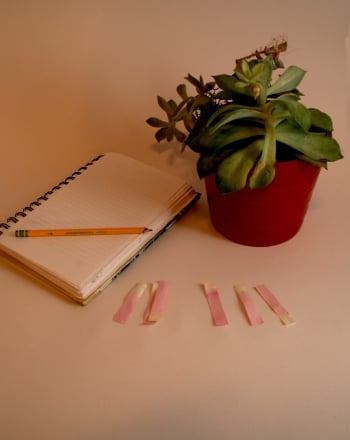Science project
Testing pH Levels in Everyday Foods and Household Products
Difficulty of Project
Medium
Cost
$10 per student
Safety Issues
Adult supervision is needed with the handling of chemicals (such as window cleaner solution and toilet bowl cleaner). Cleaning solutions should not be ingested.
Material Availability
Moderate; pH test paper may be difficult to obtain
Approximate Time Required to Complete the Project (Including analysis and write-up)
2 hours
Objective
What is the project about?
The pH level project is designed for students to test the acidity of common fruits, foods, and household products.
What are the goals?
The goal of the pH level project is for students to understand the varying levels of acidity in various substances. Students should also be asked to consider the connection between pH levels and toxicity (example: pH levels of stream water or blood).
Materials and Equipment / Ingredients
What materials are required?
- pH test paper (1-14 range preferably) (6 strips per student)
- Small paper cups (6 per student)
- Baking Soda (1 teaspoon per student)
- Measuring spoon (teaspoon)
- Marker
- 1 to 2 ounces of the following liquids are required per student:
- Distilled water
- Window cleaner solution
- Toilet bowl cleaner
- Lemon juice
- Milk
Where can the materials be found?
All materials, except for the pH testing paper, can be found at a grocery store or all-purpose store (such as Target). pH test paper is inexpensive, but may be harder to find. You may want to search for a laboratory equipment/supplies store in your area. Another option is to purchase the paper online. Here are a few possible links:
https://www.indigoinstruments.com/test_strips/ph-litmus/;
http://www.vitacost.com/TriMedica-AlkaMax-pH-Test-Papers?csrc=GPF-744665002022.
Introduction
Research Questions
- What is pH?
- How do you measure pH?
- What is the scale pH is measured on?
- What pH level does water have? Is water acidic, basic, or neutral?
- What is the most acidic level?
- What is the range of acidic levels?
- What is the most basic level?
- What is the range of basic levels?
Terms, Concepts and Questions to Start Background Research
For the parent/student, what terms and concepts are required to better understand the project?
Experimental Procedure
- Label each small cup as one of the following: baking soda, milk, water, lemon juice, toilet bowl cleaner, and window cleaner solution.
- Using the appropriately labeled cup, measure 1 teaspoon of baking soda and mix with several ounces of water.
- Dip a new, unused strip of pH test paper into the mixture (review the test paper product instructions on how to properly use the test strips).
- Compare the pH test paper with the color chart (color chart is attached; the pH paper kit may include a color chart as well).
- Record results.
- Pour 1-2 ounces of milk into the appropriately labeled cup.
- Pour 1-2 ounces of water into the appropriately labeled cup.
- Pour 1-2 ounces of lemon juice into the appropriately labeled cup.
- Pour 1-2 ounces of window cleaner solution into the appropriately labeled cup.
- Pour 1-2 ounces of toilet bowl cleaner into the appropriately labeled cup.
- Repeat steps 3 - 5 on each of the cups (don't forget to use a new, unused strip of pH test paper on each substance).
- Compare results of pH level between each substance tested by drawing a pH scale and labeling each score with the substance name.
Bibliography / References to related books / Links to related sites on the web
Education.com provides the Science Fair Project Ideas for informational purposes only. Education.com does not make any guarantee or representation regarding the Science Fair Project Ideas and is not responsible or liable for any loss or damage, directly or indirectly, caused by your use of such information. By accessing the Science Fair Project Ideas, you waive and renounce any claims against Education.com that arise thereof. In addition, your access to Education.com's website and Science Fair Project Ideas is covered by Education.com's Privacy Policy and site Terms of Use, which include limitations on Education.com's liability.
Warning is hereby given that not all Project Ideas are appropriate for all individuals or in all circumstances. Implementation of any Science Project Idea should be undertaken only in appropriate settings and with appropriate parental or other supervision. Reading and following the safety precautions of all materials used in a project is the sole responsibility of each individual. For further information, consult your state's handbook of Science Safety.













